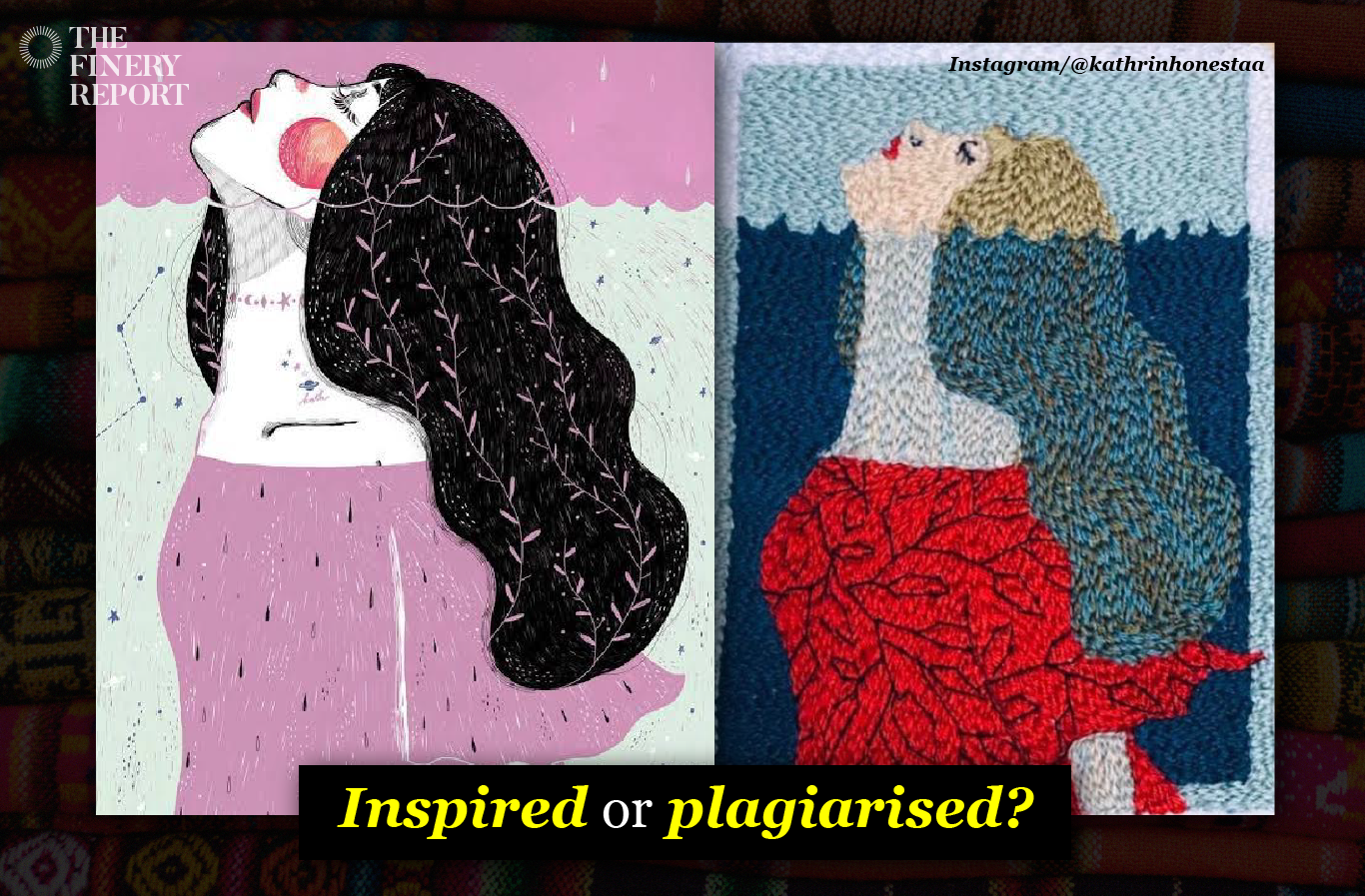Putting price on artwork - Part 2. The thin line between plagiarism and inspiration
Read in Indonesian
Image: Kathrin Honest’s artwork (left) and university student who plagiarised her artwork (right)
Plagiarism in general is an act where a person uses somebody else’s artwork and claims it as his or her own work with or without any modification on half or the entire artwork. The artwork is then used to gain profits without the original owner’s permission. It is a clear indication that plagiarism causes moral and material damages to creators.
Plagiarism is defined as an act that violates the law if the plagiarised artwork is within categories protected by Law No.28 Year 2014 on Copyright. Copyright protection covers art, literature and science, including illustration.
According to the Copyright Law, there are three requirements that must be fulfilled in order to classify an act as plagiarism:
Using others’ artwork without permission;
Using the artwork to gain profits; and
Included in copyright protection
This explanation could cause confusion since most plagiarism acts involve modifications of the original artwork as mentioned in the first part of this series. The line between plagiarism and inspiration is hard to grasp the government and artists haven’t come into agreement to create clear guidelines.
Fashion designer and content creator Diana Rikasari stated, “Plagiarism is when we like someone’s artwork, then [we] create an artwork that is totally similar and claims it as an original. Some people rationalise it as doing a slight modification, such as changing the colours and removing certain elements from the original artwork. However, when we look at the entire plagiarised artwork, we can see similarities between the original and the plagiarised.”
Distinguishing the elements of similarity in an artwork is still a challenge because there isn’t thorough explanation in the Copyright Law. Article 44 in the Copyright Law only states that substantial portion of changes in artwork is not considered as copyright infringement if it is used for personal interest. The amount of elements in an artwork has to be taken into consideration.
Moreover, there are many factors that can contribute to similarities in an artwork, although they are not necessarily plagiarism. Technical factors, such as similar layout, are not considered plagiarism. It is a matter of design ethics.
Illustrator Dionisius M. B. Djayasaputra (Dion) has his own formula on plagiarism. If an artwork is inspired by other artwork, there can only be one similarity, be it the mood, location, composition, colours or other elements. “I think if they have similarities in at least two aspects, it gets closer towards plagiarism.”
For Dion, being inspired is something abstract, free and not entirely similar. Inspiration is influenced by thoughts, feelings, backgrounds, colour choices or other things that appear from within the creator.
“When we use someone’s work as an inspiration, the artwork becomes the foundation that will be combined with the factors [mentioned] above. When we copy too many aspects, it will be easier to call it a copied or plagiarised artwork,” said Dion.
Diana sees that copying and being inspired are two different things. There is a thick line between them. “The difference between both is crystal clear, yet, more often than not, we choose to turn a blind eye,” she said.
“Being inspired means we try to learn about the background of an artwork - what inspires the birth of an artwork - and create a new artwork based on our personal interpretation. This interpretation is supported by things that inspired us at that time,” she explained.
Diana added that plagiarising is permissible as long as it is done as part of a learning process. Plagiarism becomes intolerable when it is executed for commercial purposes or marked as one’s own effort.
Another distinction between original and plagiarised artwork can be spotted on the creator. “The original creator will be able to convey his or her thoughts and feelings through an artwork because he or she is inspired. On the contrary, a person who plagiarises doesn’t have a unique story to tell, so their artwork looks empty,” said Diana.
Illustrator Junissa Hardianto echoed a similar opinion to Diana’s. She stated that being inspired means interpreting something to an artwork with one’s own style and signature. She agrees that being inspired from an artwork means learning about the artwork and the creator, including colour choices and techniques.
“Similarity in style doesn’t mean copying, because basically, there are plenty of techniques to use. It is different with plagiarism that can be clearly seen,” said Junissa.
There are also technical aspects that cannot be categorised as plagiarising. For instance, using similar methods of execution or techniques like the case with Suku Home TFR discussed before. Many people assumed that the plagiarism on Suku Home’s collection lies in the batik technique. Batik is a method and anyone is allowed to use it. The plagiarism on Suku Home lies on the prints created by the batik technique.
Just like batik technique, business methods and types of business do not belong to anyone. Unlike artwork, there is a limit on products and services categories, which is reflected in the number of product and service classes on the Directorate General of Intellectual Property Rights and business categories for companies.
Edit: The sentence ‘distinguishing the elements of similarity in an artwork is still a challenge because it hasn’t been covered in the Copyright Law’ is revised to ‘distinguishing the elements of similarity in an artwork is still a challenge because there isn’t thorough explanation in the Copyright Law. Article 44 in the Copyright Law only states that substantial portion of changes in artwork is not considered as copyright infringement if it is used for personal interest. The amount of elements in an artwork has to be taken into consideration.’













